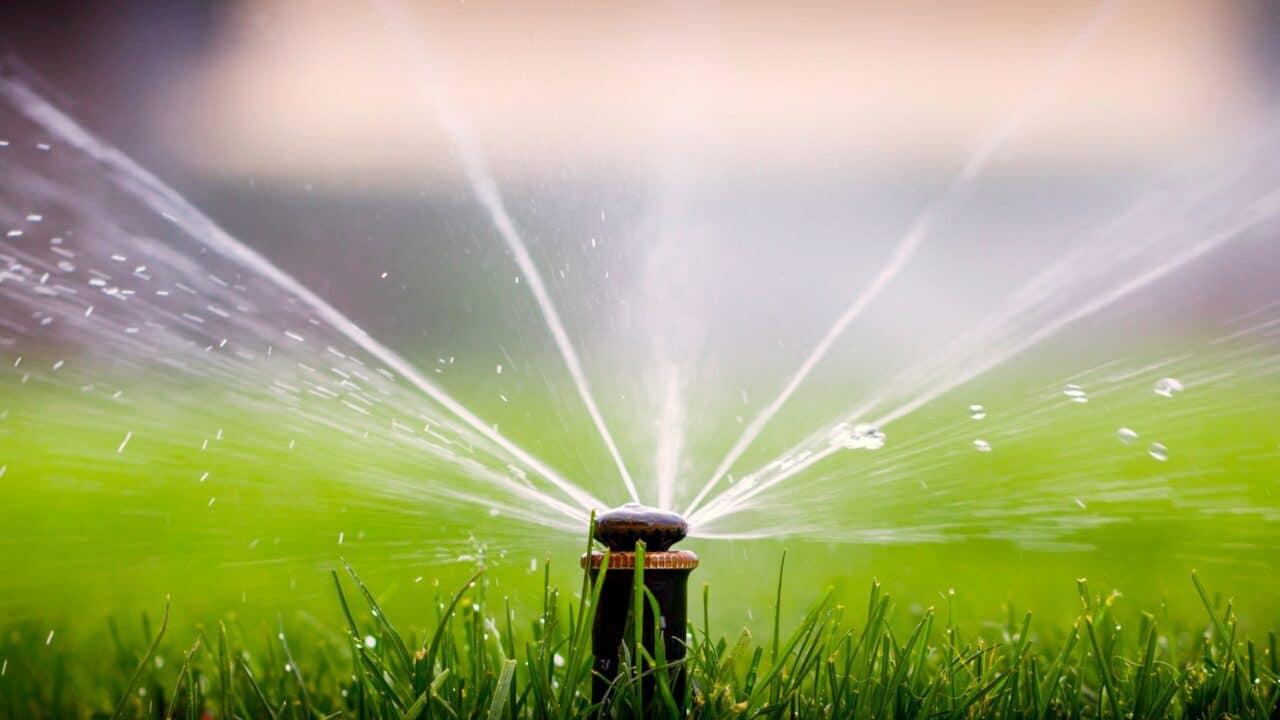To grow thick, healthy grass after overseeding, water lightly 2–3 times a day for the first 10–14 days, then gradually reduce to deeper, less frequent watering. Consistency is critical in Northeast Ohio’s fall weather to ensure full germination and strong root development.
Key Takeaway: Don’t Let Your Seed Dry Out
Overseeding is one of the best ways to repair a tired lawn—but without the right watering routine, even the best seed won’t take.
Here in Northeast Ohio, where fall conditions vary wildly between dry spells and sudden rain, your grass seed needs a clear, consistent watering schedule to survive its first few weeks.
In this article, we’ll lay out exactly how and when to water after overseeding, why it matters so much, and how to adjust your routine based on weather and lawn type.
Week-by-Week Watering Schedule
📅 Week 1–2: Keep It Light and Frequent
-
Water 2 to 3 times per day
-
Light watering — about ¼ inch per session
-
Goal: Keep the top ½ inch of soil consistently moist
-
Ideal times: Morning, early afternoon, late afternoon (avoid evening to reduce fungus risk)
This is the critical germination window. If the seed dries out, it dies.
Even short dry spells can cause uneven growth or total failure in bare patches.
💡 Tip: Use a sprinkler timer to make this easy — or water manually with a fine spray setting.
📅 Week 3–4: Shift to Once Daily, Water Deeper
-
Water once per day, ideally early morning
-
Increase water to about ½ inch to ¾ inch per session
-
This encourages deeper root growth
-
Avoid late-evening watering — wet overnight conditions promote disease
By now, you should see green fuzz turning into actual grass blades. This is when the roots are establishing themselves, and deeper water helps anchor them into the soil.
📅 Week 5–6: Water Every Other Day (As Needed)
-
Water every 2–3 days, depending on rainfall
-
Aim for ¾” to 1” of water per week, including rain
-
Monitor grass health: drooping blades or bluish-gray tint = needs water
At this point, your lawn is transitioning into normal maintenance mode.
Fall rain in Northeast Ohio can often cover your watering needs — but don’t rely on it blindly. A dry, sunny week can undo all your progress if you stop too soon.
How to Tell If You’re Watering Enough
✅ Signs of Proper Moisture:
-
Soil is damp to the touch but not soggy
-
Grass seed is plump and showing signs of sprouting
-
New blades are upright and green
🚫 Signs of Underwatering:
-
Seed shell appears dry or brittle
-
Bare patches stay bare longer than 10–14 days
-
Sprouts wilt mid-day
🚫 Signs of Overwatering:
-
Mushy soil or puddles
-
Fungus growth (mushrooms, mold)
-
Seed washing away or clumping
Tips for Success in Northeast Ohio’s Fall Weather
🍂 Watch Nighttime Temps
If overnight lows dip below 45°F, soil temps may drop enough to slow germination. Continue watering — but expect slower results.
☀️ Don’t Rely on the Hose Alone
Use rain gauges or empty tuna cans to track total water. Many homeowners overestimate how much they’re applying.
🌧️ What If It Rains?
Skip a scheduled watering session if you get a gentle, soaking rain. But if it’s just a drizzle or quick shower, stick to your plan.
💨 Wind and Sun = Faster Drying
Pay extra attention to exposed areas or slopes that dry faster. These spots may need an extra short watering session each day.
Common Mistakes to Avoid
Skipping Days Early On
Seed needs moisture every day to germinate. Skipping just one day during week 1–2 can create patchy results.
Blasting the Lawn with a Hose
Too much pressure washes seed away or pools water. Use a gentle spray setting or oscillating sprinkler.
Watering at Night
Cool, wet grass overnight increases the risk of lawn diseases like pythium or dollar spot. Stick to morning or afternoon.
Stopping Too Soon
Just because it’s green doesn’t mean you’re done. New roots need consistent moisture for 4–6 weeks to fully establish.
What If You Can’t Water During the Day?
If your schedule doesn’t allow for mid-day watering:
-
Water early morning and early evening
-
Use timers or programmable hose systems
-
Focus on bare patches and sunny zones where drying happens fastest
Even twice a day can be enough if done consistently and strategically.
FAQ: Watering New Grass After Overseeding
How long should I water each session in the first week?
Just long enough to moisten the top ½ inch of soil — typically 5–15 minutes, depending on your sprinkler type and water pressure.
Can I water too much after overseeding?
Yes. Overwatering leads to disease, seed washout, and shallow root systems. The goal is moist, not soggy, soil.
What if it rains heavily after I overseed?
Light to moderate rain is helpful. A heavy downpour may wash seed into low spots. Re-rake and overseed bare patches if needed.
When can I stop watering daily?
Once the grass is 2.5–3 inches tall and has been mowed once, you can reduce watering to 2–3 times per week.
Do shaded areas need different watering?
They may stay moist longer and require less frequent watering — but monitor closely, especially if under trees where roots compete for moisture.

